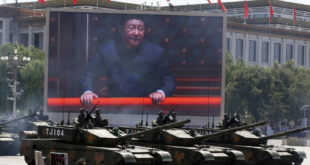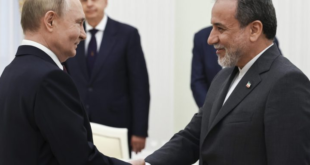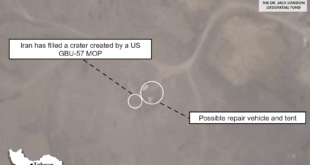Although Russia’s offensive near Kharkiv has grabbed public attention, Moscow continues to focus its main effort on taking the rest of the Donbas region in eastern Ukraine. Russian forces have achieved incremental gains on the eastern front over the past two weeks, most notably near the small but militarily significant city of Chasiv Yar. While Russia’s advances have been minor, the situation is unstable due to Ukraine’s manpower shortage, and the Kharkiv offensive has further stretched Ukrainian forces.
After some quick initial gains, Russian progress in the Kharkiv direction has largely stalled. The offensive, however, has achieved some success in its likely goal: compelling Kyiv to divert forces badly needed elsewhere. Ukraine began transferring units to the Kharkiv area a few days before Russia launched its offensive there on May 10. Additional forces appear to have subsequently redeployed to the area.
Some of the units sent to the Kharkiv direction were previously defending Chasiv Yar and nearby villages. Following their redeployment, Russia has managed to gain some ground in the Chasiv Yar sector.
In the weeks prior to the Kharkiv offensive, the situation around Chasiv Yar had appeared to stabilize. Russia launched its push at Chasiv Yar in early April. By mid-month, Moscow’s forces had captured the village of Bohdanivka, northeast of the city, and had taken positions on the outskirts of the “Kanal” microdistrict in eastern Chasiv Yar. South of that district, Russian troops advanced to the eastern edge of the Siverskyi Donets-Donbas Canal, which splits the city and provides a natural defensive obstacle. But Russian advances then stalled.
Meanwhile, Russia appeared to shift tactics, reducing its use of armored fighting vehicles (AFVs). The Russians had initially conducted regular mechanized attacks in the Chasiv Yar area. The opening attack, launched in early April, reportedly involved up to 32 AFVs, while subsequent attacks seemed to stay below the company level. This small scale reflects Russia’s diminished capability to plan and execute offensive operations, due to heavy casualties among its officer corps and professional enlisted troops. As time passed and Russian vehicle losses mounted, Ukrainian soldiers said Russia began emphasizing even smaller-scale assaults by infantrymen riding quad bikes, motorcycles, and utility terrain vehicles.
However, Moscow’s Kharkiv offensive has coincided with an uptick in Russian mechanized attacks in the Chasiv Yar area. Ukraine has repelled most of them. But Russian forces have achieved advances that, while modest, could augur further progress.
Russia has launched a series of attacks into the Kanal microdistrict. One of these attacks, on May 17, reportedly comprised 20 AFVs from the 98th Guards Airborne Division. Russia has since conducted additional, smaller-scale mechanized attacks in this area. While Ukrainian defenders have knocked out many of the vehicles, some managed to deliver troops to buildings within the Kanal area. Whether the Russians have managed to secure a foothold there remains unclear. Regardless, Ukraine’s grip on the microdistrict seems to be slipping. Russian glide bomb strikes have decimated many of the buildings Ukrainian troops use as defensive positions.
In addition, Russia has taken a few square kilometers of territory south of the Kanal microdistrict, according to Ukrainian analytical project DeepState. The Russians thus expanded their presence near the canal and within Ivanivske, a village southeast of Chasiv Yar that Russia has partially controlled for months. Russian troops have previously crossed the canal in this area but have been unable to secure a foothold on the western side.
Earlier this week, social media footage indicated Russian forces have also gained a little ground in Klishchiivka, a village southeast of Ivanivske that Ukraine retook during its 2023 counteroffensive. Troops from Russia’s 6th Motor Rifle Division (3rd Army Corps) advanced into the southern part of Klishchiivka and raised a flag in the village. Klishchiivka likely remains in the gray zone, though, with Ukrainian troops still controlling dominant heights to the west and northwest.
Capturing Klishchiivka and the nearby high ground would make it easier for Russian forces to cross the canal south of Chasiv Yar. Russia could then cut off the eastern parts of the city. Russia could also attempt to envelop Chasiv Yar by pushing to the village of Stupochky, south of the city.
Taking Chasiv Yar would bolster Russia’s position heading into an expected summer offensive, possibly translating to faster advances. The city is located on high ground, which would provide an advantage to Russian first-person view drone crews and allow Russian artillery to bombard the nearby city of Kostyantynivka, an important logistics hub, as well as settlements along the highway from there to the city of Kramatorsk.
While Russian progress on the eastern front remains incremental, its gains reflect a Ukrainian manpower shortage that will take time to resolve. The Kharkiv offensive has compounded this challenge, and Russia may well launch another, smaller offensive in Sumy Oblast to further stretch Ukrainian forces. Moscow likely hopes that attrition and sustained pressure on multiple axes will eventually lead Ukrainian lines to collapse somewhere along the eastern front.
For now, Ukrainian forces are holding. Time will tell whether Kyiv can mobilize sufficient manpower to stabilize its lines. In the meantime, Ukraine needs to make Moscow’s gains as costly as possible to reduce Russian offensive potential.
 Eurasia Press & News
Eurasia Press & News




